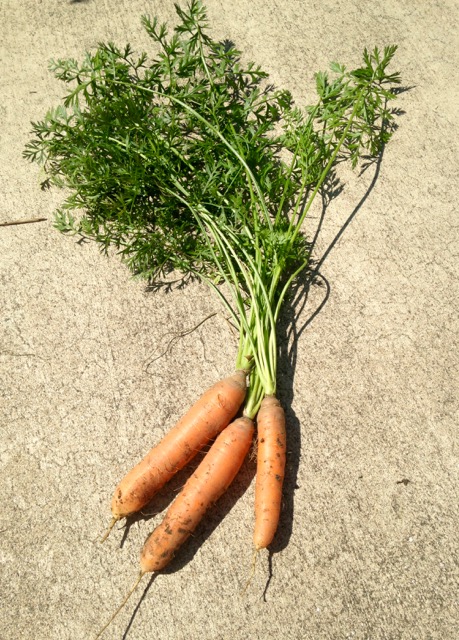By Ginger Dawson
Special to NKyTribune
Carrots. I have finally figured out carrots. As it always seems to be with beginner’s luck, many years ago, I somehow raised a very nice little batch of carrots. I thought to myself, “Well, this is easy, I’ll just do this again”. Ha.
The second year was miserable — nasty little things, all bent and puny. Awful. So after that, I sidestepped carrot production. I mean really, who needs them? It’s not like carrots have the cachet of other, more appealing, veggies in my back forty. Please, let’s not compare carrots to tomatoes. Or even eggplant. There were other, more important, matters to conquer and this carrot business was put on the back burner.
But, like many other matters regarding gardening and my own evolution, I learned something about myself. I knew that I was not going to let this go. Like other gardening conundrums, carrots kept nagging at me. I had to conquer those little orange roots. So, when I had the time, I went back at them two years ago.

Do I dare leave some of these in the ground all winter?
In the course of my years-long gardening quest, I have realized that I possess a preternatural tenacity for problem solving through gardening. Or, in plainer language, I am an obsessive nut. I took this opportunity for “better living through gardening” and rose to the occasion again to pursue self-actualization through carrots.
This year, I have a great crop. After doing a little more research, I have discovered that soil preparation is the key. The bed has to be worked, pretty deeply, to a fine, light texture so that the roots can expand easily and consistently. This also means no foreign objects, which, of course, is practically impossible in an urban garden.
Since half of my garden occupies the space that an old house sat on many years ago, there are always bits of glass, tile, nails, bottle caps, stones and brick. I have all manner of interesting and unique little items that I regularly unearth and collect. The bricks always present themselves, first, to the tiller. I hit one brick and the tiller seizes up like a bucking bronco and threatens to drag me. This has led to some exciting times. Fortunately, my tiller has a bar on the handle that has to be squeezed to engage the engine when it’s in gear.
Unfortunately, this was a somewhat counter-intuitive concept to me. Having had a pony when I was kid, and like practically every Shetland pony, mine was meaner than a snake. She liked to buck and kick up her hind legs like a jackass. I always went over her head. So, naturally, my first instinct was to grab hard and hang on to the tiller, just like I did with that damn pony.

Success! Self-Actualized carrots!
It only took me a few times to figure out that the tiller, unlike that pony, did not have a mind of its own. But no matter, hanging on exerted zero influence over either. Once again, the only training that occurred was to the operator. Another lesson as to the power of man over his environment.
After I took the time to meticulously hand-sift the seed bed, I planted the seed. Carrot seed is very tiny and tedious to plant. It needs to be planted 1/4” to 1/2” deep, and about an inch or so apart. If you can find pelleted seed, which has a coating that makes each seed a little bigger and easier to handle, try that. I like it.
I have learned that it is very effective to lay a soaker hose about three inches away from the planted row and anchor it with ground staples. I also cover the row with a little A-frame made from chicken wire to keep the birds away.
Just make sure that your carrot seed stays moist during its germination period and receives about one inch of water a week.
The reason I am giving you this carrot tutorial now, seemingly out of season, is this — what to do with the harvest?
I have heard that if you leave the carrots in the ground and mulch them, very heavily, they will not freeze and will keep. You simply have to dig them up as you need them.
I don’t know about you, but this all sounds just a little too good to be true. How can anything this easy to do, work? And, here’s another thing — what if I don’t want to go out in the snow and dig up carrots? These are fair questions!
I guess I’ll get those answers the hard way. It seems I always do.
Ginger Dawson has resided in Covington, Kentucky since 1988. Raised on a farm in South Central Ohio, she has enjoyed a very eclectic and enriching life. She loves her Italianate Victorian Townhouse and particularly the garden behind it.


























Great article! Having a horse, I find it very useful.